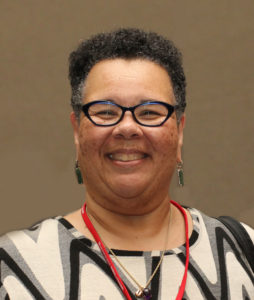
Consider Waiting
Teachers are people who plan. We cross classroom thresholds with worn briefcases bulging with written lectures clearly forecasted in thick, detailed, syllabi. Entire curriculums are planned three, four, five years into the future. Course learning outcomes are carefully aligned with degree programs and degree programs are carefully align with budgets – all well in advance of students’ enrollment or matriculation. Planning insures a cast iron tradition.
Long-range planning, predicated upon long-ago decisions and forgotten needs, makes institutional change challenging, or even impossible. It is ironic; the very attribute which lends stability is also the albatross around our necks. The need to rethink our reliance upon long-range planning and strict adherence to hollow tradition has been exposed during this moment of pandemics. The year 2020 has been a year when plans have gone awry.
In this moment, I have a proposition. While this proposition might feel like reckless abandon for those who depend upon the established traditions, reputable standards, and conventional methods of the used-to-be academy, in this protracted moment of pandemics, I want to suggest that this might be a moment to resist the impulse to plan, reflect and analyze. Consider waiting.
Resist the impulse to presume how the end will be. Resist the impulse to attempt to go back to business as usual, business as normal, business that no longer serves the students in our care. If we can move past our panic, we will remember we needed to overhaul our educational system before the pandemics snatched us, halted us. If we dare risk surrendering romanticized views of our educational standards, we may recall that many of our traditions, while noble, were often begun arbitrarily. And, given the slowness of institutional change, consider that adult pedagogies have advanced while so many yet cling to outmoded, outdated, and uninformed pedagogies for adult learners in a digital age. Perhaps in this moment the courageous response is, rather than plan, to wait.
Just like it is ill-advised to pause and reflect in the middle of a hurricane or surgery or any life-threatening catastrophe, so it is ill-advised, during the 2020 pandemics, to rush to meaning making and gestures of clarity; to rush to return to how it was; to rush to assuming where we will be and how we will be when the pandemics subside. In this moment, if we were the biblical character Noah, the bird we sent out to search for dry land would return having found no place to land. We are not yet close to shore.
The waiting is not meant to be idle. In the waiting, carefully ponder, contemplate, imagine - what of the current change will you keep?
A colleague who heads an IT department at a liberal arts college said that by his faculty going to online courses (albeit crisis pedagogy) in spring of 2020, he estimates that this sped up the faculty moving to online teaching by ten years. Ten years was gained for a desired change!
Perhaps our moments of quick and dramatic shifts to online teaching showed us that our educational institutions are not as calcified as previously reported. If that is the case, what will it take to lean into the new found limberness? What is at stake if we choose to re-calcify?
Like you, I am getting pressure to plan for summer 2021, and all of 2022 & 2023. I simply cannot. I do not have a crystal ball. And I do not want to pretend that even when the vaccine is distributed (2021?2022?) that we will return to how it used to be. I do not want to squander this moment of waiting with worry, anxiety and stress for a future I cannot predict nor control. I tell people that I am waiting.
Once we can return to face-to-face work, I want, then, time to reflect. Then, I will want time to take stock and study. Once we are no longer in the midst of multiple waves of quarantines, I will want to assess where we are, and learn the new/needed ways to move forward. I will need time to be creative. The waiting that I need right now is the mustering of courage for new visions. In my not-idle waiting I am looking to what historians have said comes after a social upheaval. Historians tell us that after this kind of societal phenomena there is typically a renaissance. Oh – I cannot wait!
There will be newly designed everything! There will be new architecture, different clothing styles, and new music and poetry. There will be new academic disciplines and reimagined ways to be school, to do school, and to get an education. There will be new painting, new sculptures, and new modes of transportation. If we truly engage in the reflection warranted by the moment of 2020 and 2021 (hopefully not into 2022), then our renaissance will be spectacular with new technology accessible by those who are impoverished, will bring end to global hunger and provide language translation fitted for everyday interactions. The post-pandemics renaissance will be marvelous! I want to participate in the renaissance with my own new thinking, renewed imagination and creativity. I want to reserve my energies to participate in the renaissance and not pour myself into reestablishing what needed to be changed. So, I wait.
What would it mean to allow our innovation to be a primary mode of meaning making – rather than our traditions being the only mode of meaning making? What would it mean to shift to reliance upon creativity rather than dependance upon tradition? In what ways can we create real innovation rather than simply settling for imitations of change meant for other people in other times or places? What is the toll to the institution should there be a call to attempt to return to normal? What is the price of going back? What changes will we maintain, expand, and normalize?
Leave a Reply